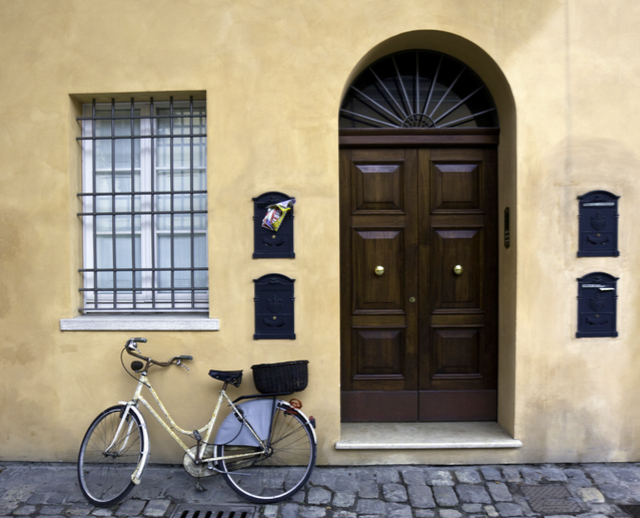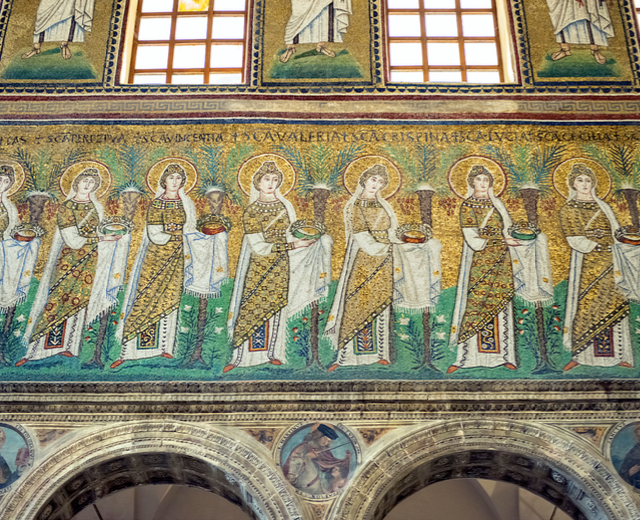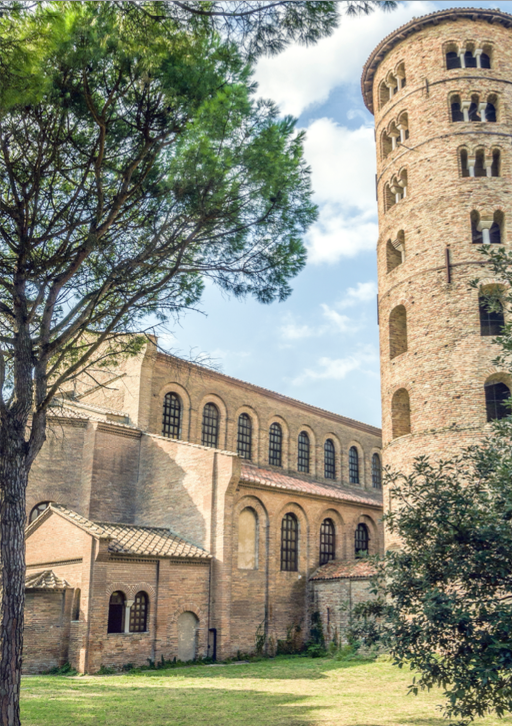
The balance between cost and effectiveness is excellent. The Po Valley—stretching along the course of the Po River in northern Italy, and including the regions of Lombardy, Piedmont, Emilia- Romagna and Veneto—is an ideal destination for a biking vacation. It is lled with art cities and is not very demanding in terms of physical preparation, making it perfect for those who want to combine cultural visits with exploration of the largest river valley in southern Europe. Two of the places to visit at this latitude are Ravenna and Mantua. These discreet cities conceal a wealth of sites that are virtually unrivaled.
Mantua
From Romagna we’ll go on to Lombardy, one of the most important centers of the Italian Renaissance (likewise a UNESCO World Heritage Site). This year, the city of the Gonzagas was elected Italian Culture Capital. So what better occasion to take advantage of the array of connected initiatives? Not to mention the fact that artists of the caliber of Andrea Mantegna (his funeral monument is in the Basilica of Sant’Andrea), Giulio Romano and Leon Battista Alberti worked here. Following their traces by cycling around the ex-duchy is can make the difference between the normal tour of an art city and a one-of-a-kind experience.
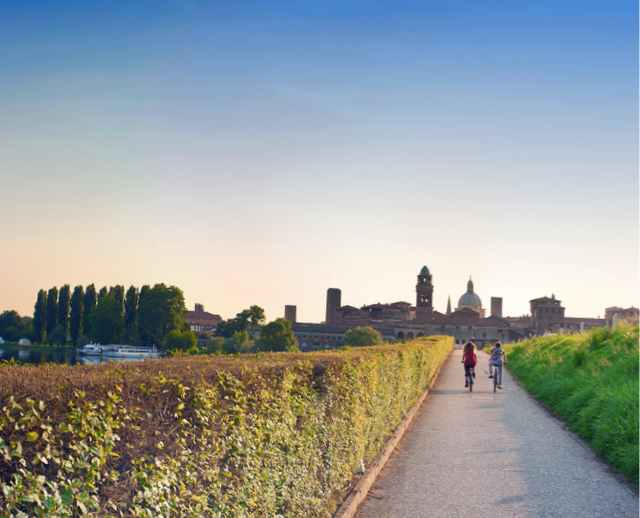
Because Mantua, which also hosts an important literary festival, has a level of culture and artwork on a par with cities that are part of the more traditional tourist itineraries. In this case, we’ll skip over the list of churches (but, trust me: there are so many you may even get tired of them) and start by putting a mark on your map at the Ducal Palace. In reality, it is a city within a city, with many buildings connected by tunnels, corridors and gardens, some of which terraced.
The Gonzaga residence is second in size only to the Vatican Palace. One of the most famous architectural works in the royal palace is the Castle of San Giorgio with the Camera degli Sposi, which Mantegna worked on for nearly a decade (from 1465 to 1475). And you’ll discover it in person. The 16th-century Palazzo Te, with frescoed rooms that are one more beautiful than the next, was built to host the amusements—and lovers—of one of the Gonzagas. But by bike you can also easily reach Palazzo della Ragione and Mantegna’s House, tour the city towers and, naturally, head to Piazza delle Erbe, a square with arcades and palaces where merchants once met to trade their goods.
In the evening, once you’ve been sated by so much culture, you can head to the outskirts of town. Agriturismo Corte San Girolamo (Strada S. Girolamo 1, tel. +39 347 8008505) is in a nature park and was built around an 18th- century mill. It is connected to Mantua by a 25-mile bike path that winds its way along the riverbank. This is a B&B, but the breakfast spread is plentiful and it is recommended by the Italian biking association, Federazione Italiana Amici Bicicletta (www. ab-onlus.it).
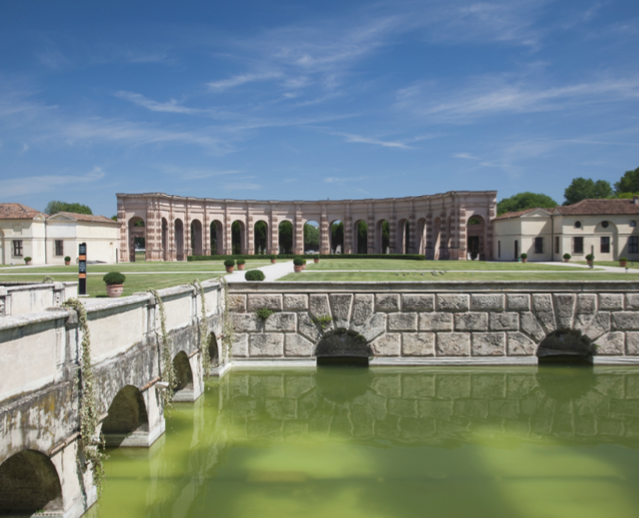
Ravenna
This is the mosaic capital of northern Italy. The province is now known for its beaches, with plenty of entertainment and discos, but in antiquity it was a capital three times. Between the 5th and 8th centuries AD, the Western Roman Empire chose the city as its capital, followed by the Ostrogoths and, lastly, the Byzantines. This is why Ravenna has a unique array of Early Christian art and, as a result, UNESCO listed it as a World Heritage Site. Two of the most famous monuments are the Mausoleum of Galla Placidia and the Mausoleum of Theodoric. The former dates back to the 5th century and is thought to be the funerary monument of the empress after which it is named. The latter was built around 520 AD by Theodoric the Great as his future tomb, and it is one of the most illustrious monuments left by the Ostrogoths. But Ravenna is also dotted with magni cent basilicas, where—as we said—you can admire mosaics in dazzling colors and astonishingly elegant marble works. Two of the main ones are the Basilica of San Vitale and the Basilica of Sant’Apollinare in Classe, but by bike you can also organize a route going to many other noteworthy monuments. Lastly, be sure to see Dante’s Tomb: the great poet is buried here, in a small shrine in an area where silence is golden. Strategic advice in this case is to choose a hotel in the middle of town, which has a large pedestrian area as well as sections where traf c is restricted, so eco-tourists will feel perfectly at home.
Hotel Centrale Byron (Via IV Novembre 14, tel. +39 0544 33479) is about half a mile from the railroad station. It provides maps for excursions in the area and is close to routes for mountain bikes, amid pine groves and riverbanks.
